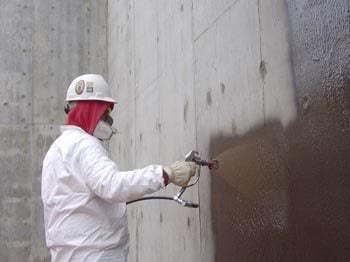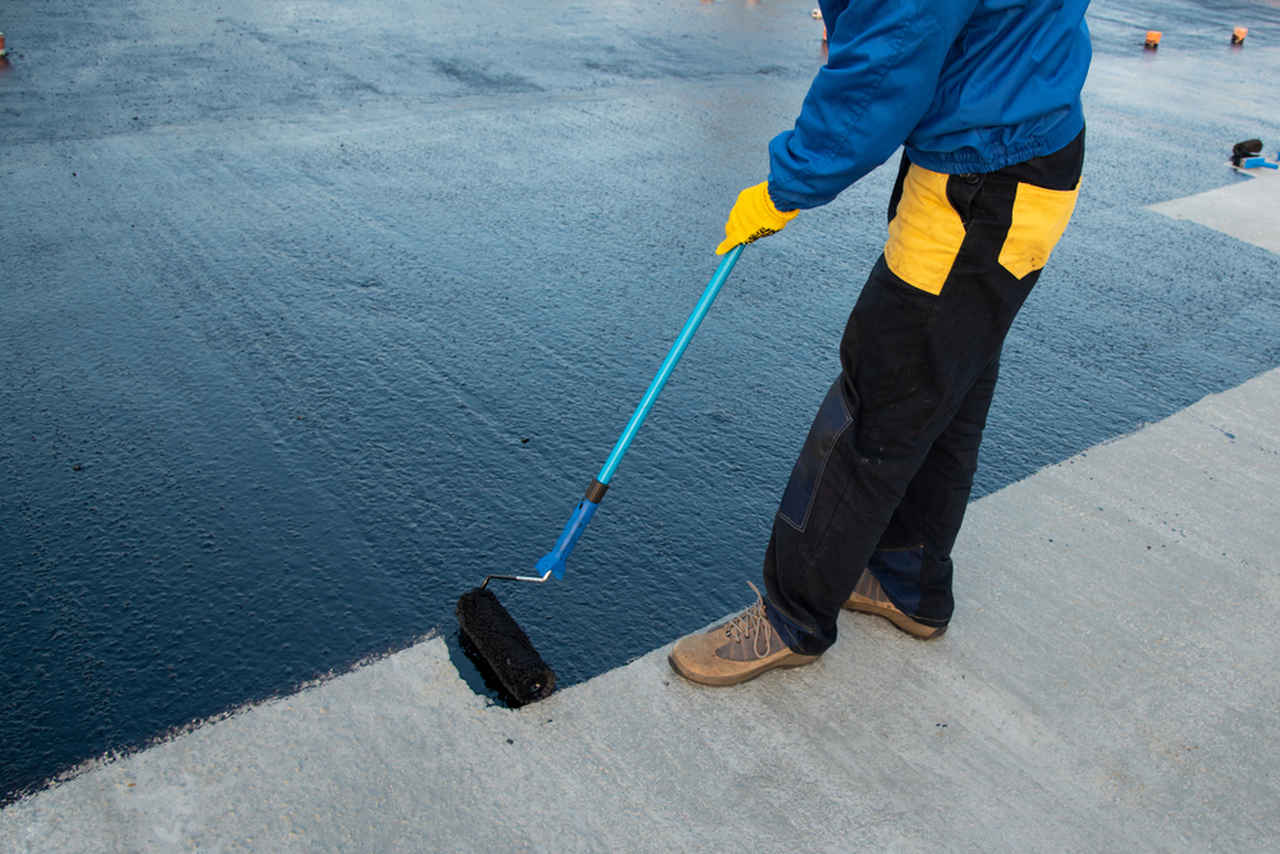Beginner’s Guide to French drain installation Omaha: Avoiding Mistakes
Wiki Article
Exactly How Waterproofing Functions: A Comprehensive Look at Techniques and Technologies
Waterproofing is crucial for safeguarding frameworks from moisture-related damages. It entails different strategies and modern technologies that develop obstacles versus water breach. Conventional approaches, such as compacted clay, coexist with modern innovations like liquid-applied membrane layers. Recognizing the subtleties of these approaches is vital for reliable application. Nevertheless, the efficiency of any waterproofing remedy pivots not only on the methods utilized however also on continuous upkeep and examination. What are the crucial factors that influence long-lasting efficiency?Comprehending the Essentials of Waterproofing
Waterproofing is an important procedure that safeguards frameworks from water breach, which can result in substantial damage gradually. This technique includes the application of different products and methods created to develop an obstacle versus dampness. The primary objective is to stop water from penetrating surfaces, which can trigger degeneration, mold development, and architectural instability.Various factors affect the option of waterproofing approach, consisting of the kind of framework, its area, and environmental problems. Comprehending the physics of water motion and the properties of various materials is important in picking a reliable waterproofing solution.Effective waterproofing not just safeguards structures yet additionally improves their durability and stability. Normally, it is incorporated right into the layout stage of building to ensure detailed defense. As awareness of water-related issues expands, the relevance of recognizing waterproofing principles comes to be progressively clear to designers, home builders, and homeowner alike.Traditional Waterproofing Approaches
Typical waterproofing techniques have been made use of for centuries, counting on reliable techniques and products to safeguard structures from water damages. Among the oldest methods includes the usage of clay, which, when compacted, develops a natural obstacle against dampness. Additionally, bitumen, a sticky, black product originated from oil, has actually been utilized for its water-resistant properties, often put on roofings and foundations.Another technique includes the application of lime-based plasters, which supply a breathable layer that allows wetness to run away while avoiding water ingress. Thatch roofing, a traditional approach still seen in some societies, provides superb waterproofing due to its securely packed straw layers.Moreover, the usage of rock and brick has projected, as these products are naturally immune to water when properly set up. In general, conventional waterproofing techniques highlight the value of selecting appropriate products and building techniques to enhance toughness against water intrusion.Modern Waterproofing Technologies
Improvements in modern waterproofing technologies have actually transformed the method structures are secured from water damage. Cutting-edge methods such as liquid-applied membrane layers and advanced sealers have improved the performance and adaptability of waterproofing services. These technologies permit for seamless application, minimizing the threat of leaks and guaranteeing comprehensive insurance coverage over intricate surfaces.Moreover, the assimilation of smart modern technologies, such as moisture sensing units and automated tracking systems, makes it possible for real-time assessment of waterproofing efficiency. This aggressive strategy promotes prompt maintenance and decreases long-term repair service costs.Additionally, developments in spray-applied finishes use fast application and excellent adhesion, adjusting to different substratums while offering robust security. Strategies like polymer-modified systems better enhance adaptability and sturdiness, making them ideal for varied environments. Generally, contemporary waterproofing innovations not just alleviate water invasion yet likewise add to the durability and sustainability of structures, marking a significant shift in the industry.Materials Utilized in Waterproofing
The efficiency of waterproofing solutions greatly depends on the products utilized in their application. Different materials are used to produce barriers against water access, each with special residential properties matched for various environments. Typically used products consist of membranes, finishings, and sealants.Liquid-applied membranes, typically made from polyurethane or acrylic, form a smooth barrier that adjusts to complex surface areas. Sheet membranes, generally created from rubber or thermoplastic, offer resilience and are ideal for larger areas. Additionally, cementitious waterproofing materials, made up of cementitious compounds, offer outstanding bond and flexibility.Sealants made from silicone or polyurethane are essential for joints and joints, guaranteeing thorough protection. Sophisticated products, such as geo-composite membranes, incorporate multiple functions, enhancing efficiency. On the whole, the option of waterproofing products is important in attaining resilient and effective water resistance, customized to certain task requirements and ecological problems.
Common Applications of Waterproofing
Waterproofing plays an essential duty in numerous markets, making sure the longevity and integrity of frameworks. Common applications consist Landscape drainage Omaha of residential services that secure homes, commercial framework that safeguards organizations, and commercial setups that require durable defense against wetness. Comprehending these applications highlights the importance of waterproofing in maintaining both safety and security and performance throughout different environments.Residential Waterproofing Solutions
Many property owners encounter obstacles with moisture breach, making effective household waterproofing services essential. Different techniques exist to resolve this issue, consisting of exterior and interior waterproofing systems. Interior services often entail the application of sealers and coverings to basement wall surfaces, which assist stop water seepage. Outside approaches commonly include the installation of drainage systems and water-proof membrane layers that draw away water far from the foundation.Additionally, house owners might take into consideration sump pumps to remove water buildup and dehumidifiers to control moisture degrees. Correct grading and making use of seamless gutters likewise play an essential role in handling water circulation around the home. By implementing these approaches, property owners can substantially lower the risk of water damage and mold growth, making sure a dry and secure living setting.
Industrial Facilities Security
Effective waterproofing remedies play a crucial duty in the security of industrial infrastructure. French drain installation Omaha. These methods are essential for securing buildings, car park frameworks, and bridges from water damages, which can jeopardize structural integrity and bring about expensive repairs. Usual applications include the setup of membrane layers, coatings, and sealers that develop barriers against moisture seepage. Locations such as cellars, roofing systems, and exterior walls are typically prioritized to assure long life and resilience. Furthermore, waterproofing systems can boost power performance by protecting against water-related problems that may result in mold development and damage. By applying durable waterproofing actions, residential or commercial property proprietors can secure their investments and preserve functional performance, inevitably contributing to the general sustainability of business facilitiesIndustrial Applications Introduction
While different industries deal with one-of-a-kind obstacles, the requirement for trustworthy waterproofing solutions stays a consistent in commercial applications. Industries such as manufacturing, construction, and power commonly run into settings where moisture exposure can endanger structural stability and operational performance. In producing centers, waterproofing is crucial for shielding machinery and materials from water damage. In building, it safeguards structures and basements against groundwater seepage. The power field relies upon waterproofing for the defense of devices in hydroelectric plants and offshore structures. Furthermore, food processing sectors make use of waterproofing to ensure hygiene and conformity with safety and security requirements. Generally, efficient waterproofing solutions are important for enhancing toughness, safety and security, and efficiency across numerous commercial settings.
Upkeep and Longevity of Waterproofing Solutions
Waterproofing options are designed to supply long-lasting protection versus moisture breach, regular upkeep is important to assure their efficiency and durability. Regular inspections play a substantial role in recognizing potential problems such as splits, peeling, or indicators of water damage. Attending to these troubles quickly can avoid more deterioration and costly repairs.Additionally, cleaning up the surface of waterproofed areas aids remove dirt and particles that might compromise the honesty of the waterproofing barrier. It's likewise advisable to reapply safety coverings or sealers as recommended by manufacturers to maintain ideal efficiency. Ecological variables, such as UV direct exposure and extreme climate condition, can impact the life expectancy of waterproofing products, making regular assessment vitalOften Asked Concerns
Can Waterproofing Be Applied in Winter?
The concern of applying waterproofing in winter raises concerns about adhesion and curing. Many products may not perform at their best in reduced temperatures, necessitating mindful selection and consideration of details standards for effective application.How Much Time Does Waterproofing Usually Last?
The period of waterproofing performance differs based upon materials and ecological variables. Normally, it can last from five to 10 years, yet normal maintenance and inspections are important to assure peak efficiency and long life.Is Do It Yourself Waterproofing Effective and Safe?
The performance and security of DIY waterproofing depend on different variables, consisting of worldly high quality and application strategy. While some individuals accomplish satisfying results, others might come across issues that endanger long-lasting protection and structural stability.What Are the Indicators of Failing Waterproofing?
Indications of failing waterproofing include noticeable water stains, peeling off paint, mold growth, stuffy smells, and dampness in wall surfaces or ceilings - Foundation waterproofing Omaha. These indicators suggest compromised obstacles, demanding timely examination and possible remediation to stop further damageExactly how Do I Pick the Right Waterproofing Contractor?

Report this wiki page